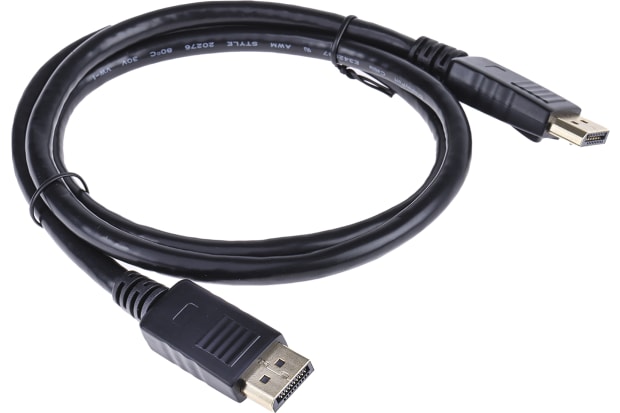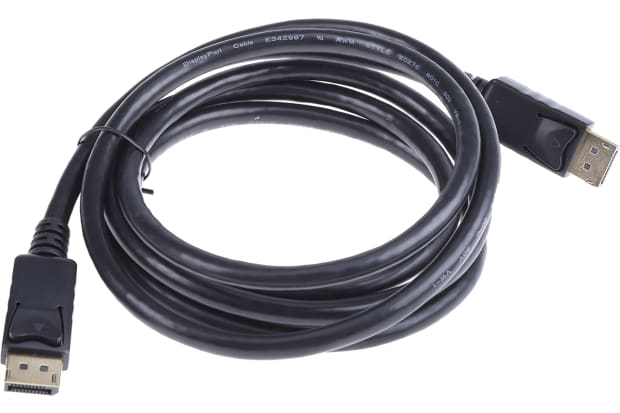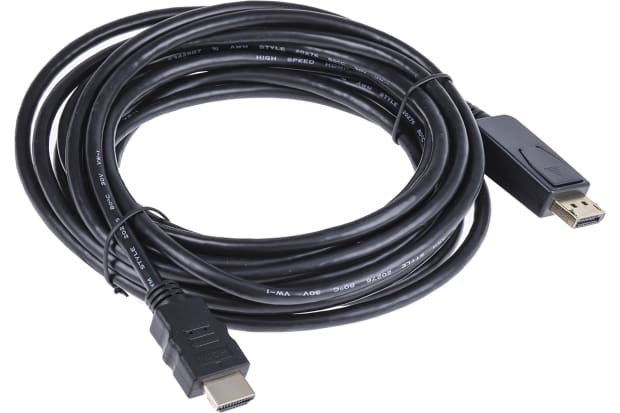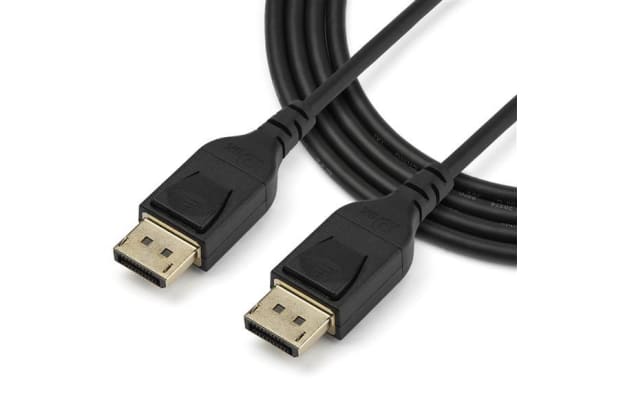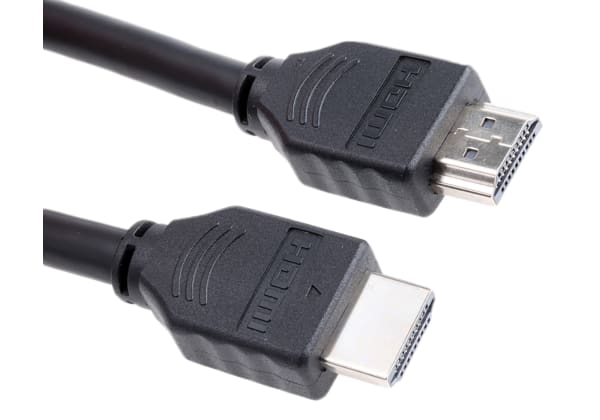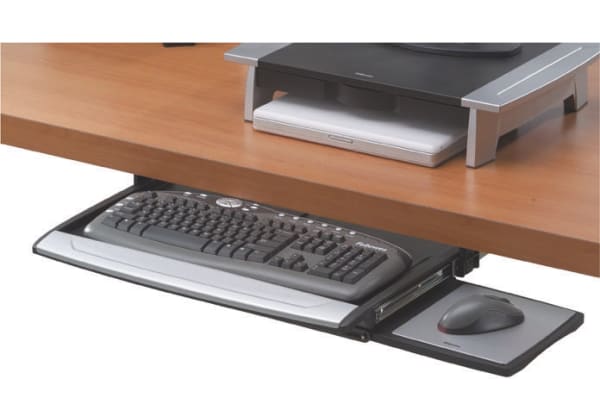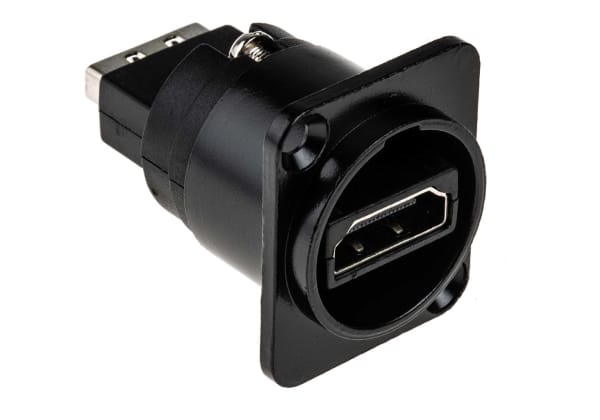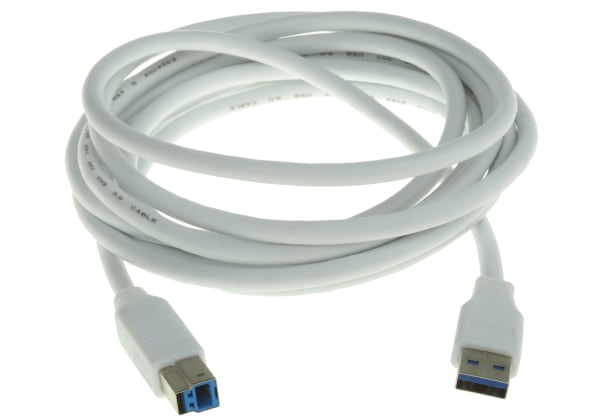- Published 30 Jan 2023
- Last Modified 29 Aug 2023
- 5 min
A Complete Guide to DisplayPort Cables
Discover everything you need to know about DisplayPort cables, from the different types & uses to the best brands.

What are DisplayPort Cables?
DisplayPort cables are used to provide video and audio connectivity between a host device (typically a PC) and a display. They are commonly used yet are relatively simple in design, with all DisplayPort cables featuring the same basic layout.
In the simplest terms, DisplayPort cables are designed to provide both audio and video signals via a single cable.
They are used to connect displays or monitors to a source device such as a PC or laptop and transmit the outputted audio and video data to the display.
DisplayPort connectors feature twenty pins fitted into an L-shaped connector. Many also include a locking mechanism to ensure a secure connection and prevent the connector from loosening or accidental disconnection.

What is DisplayPort?
First introduced in 2006, DisplayPort (DP) was created to supersede the older VGA and DVI interfaces. It was originally centred around data-driven markets such as professional IT and computing displays and equipment but has since developed and is now more widely used.
The DisplayPort technology and interface are beneficial thanks to their versatility and range of features and functions. DisplayPort enables high-performance device connectivity for both audio and visual data, and also provides the functionality to connect multiple displays via a single cable output.
How Does DisplayPort Differ from HDMI?

Both HDMI and DisplayPort are digital systems, originally designed to replace older analogue systems such as VGA. They both have the same purpose – to transmit high-definition digital audio and video to a display from a source device – but this does not mean that they are the same.
There are understandably some key similarities between the two, such as image quality, but their differences should not be overlooked. DisplayPort and HDMI cables are intended for different purposes, feature different connectors, and cannot be used interchangeably.
DisplayPort is primarily used on PCs, laptops, and tablets for video transmission. Unlike HDMI, it is very rarely used on consumer electronics. Another key difference is that DisplayPort is subscription-free for producers, whereas HDMI must be licensed by the manufacturer.
There are also several additional features that make it easier to differentiate between the two. DisplayPort offers the functionality to drive more than one display with a single cable, making it highly useful for professional applications. Conversely, HDMI can only drive a single display per cable. However, HDMI can support an ARC (Audio Return Channel) which allows sound to be sent from the display to the source device. DisplayPort does not offer this capability.
DisplayPort Cable Lengths
DisplayPort cables are available in a variety of lengths to suit different applications and user requirements. There is no specified DisplayPort cable length limit and no maximum length for these cables, meaning that it is possible to get cables up to 50m in length. Additionally, all cables up to two metres in length must support HBR2 speeds (21.6Gbit/s).
Shop some of the most common DisplayPort cable lengths below:
DisplayPort Cable Types and Uses
Several different types of DisplayPort cable are available, each with unique advantages. However, it should be noted that all DisplayPort cables are compatible with all DisplayPort devices, regardless of the type or version.
There are two main types of DisplayPort cable – the standard cable, and a smaller version called Mini DisplayPort. The standard cable is most commonly used. However, the Mini DisplayPort is ideal for smaller devices and compatibility with Apple equipment. It was first released by Apple in 2008 but since became more widely used in conjunction with Thunderbolt technology.
It should also be noted that these connector types differ only in terms of their physical size and shape. Functionality and capabilities are the same across both standard and mini connectors so features or performance will not be impacted by the connector type used.
DisplayPort cables are typically compatible with a range of computing equipment and devices such as PCs, laptops, monitors, and displays. DisplayPort is usually used for commercial and professional-grade devices, whereas HDMI is more consumer-focused. However, some high-quality domestic devices and computing equipment does use DisplayPort – for example, high-end graphics cards, or high-resolution monitors.
Suitable for use with internal and external display connections, DisplayPort is a versatile technology that is ideal for use with high-performance devices. It is highly beneficial for simultaneously supporting high resolution and high refresh rates, making it a solid choice for many applications.
DisplayPort Cable Brands
Startech
With an extensive range to choose from, shop DisplayPort Cables from leading brand Startech online today.
RS Pro
Browse DisplayPort cables available from RS Pro, our own in-house brand, and discover the best cable for your requirements.
Roline
With a wide range of lengths and connector types to choose from, shop Roline DisplayPort cables with RS.
Bandwidth Certification Levels
DisplayPort cables are primarily categorised by their bandwidth certification level. This table outlines the different certifications in more detail:
Transmission Mode | Bandwidth (Gbit/s) | Minimum Cable Certification Needed |
|---|---|---|
| RBR (Reduced Bit Rate) | 6.48 | RBR |
| HBR (High Bit Rate) | 10.8 | Standard |
| HBR2 (High Bit Rate 2) | 21.6 | Standard |
| HBR3 (High Bit Rate 3) | 32.4 | DP8K |
| UHBR 10 (Ultra High Bit Rate 10) | 40 | DP8K |
Related Guides
Related links
- DisplayPort Cables
- StarTech.com Male DisplayPort to Male DisplayPort 8K 60Hz (7680 x 4320), 5m
- RS PRO Male DisplayPort to Male DisplayPort Cable 3m
- What is a DVI Cable?
- DisplayPort to HDMI Cables
- VGA Cables - A Complete Buyers' Guide
- DisplayPort to VGA Cables
- RS PRO Male HDMI to Female DisplayPort Cable 150mm
